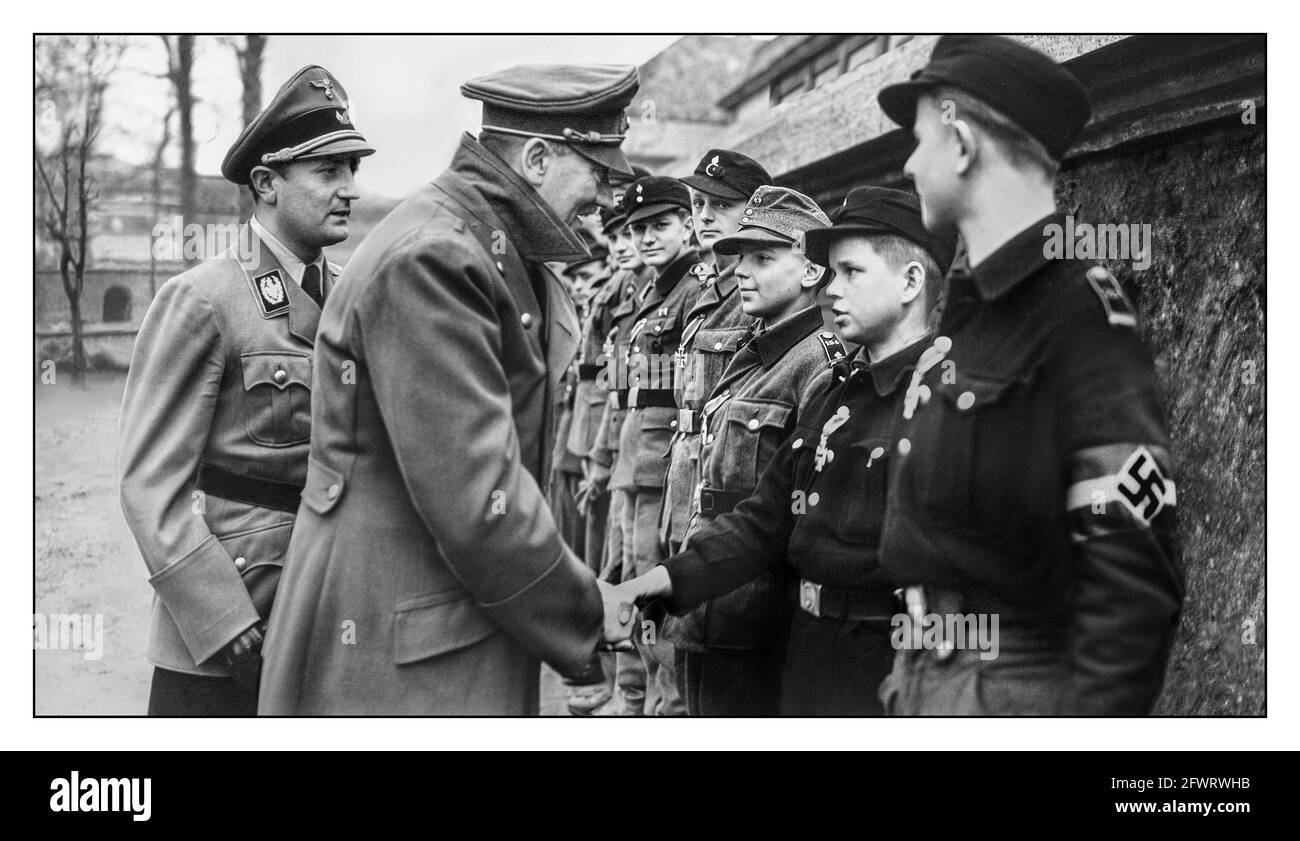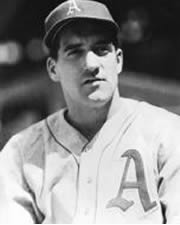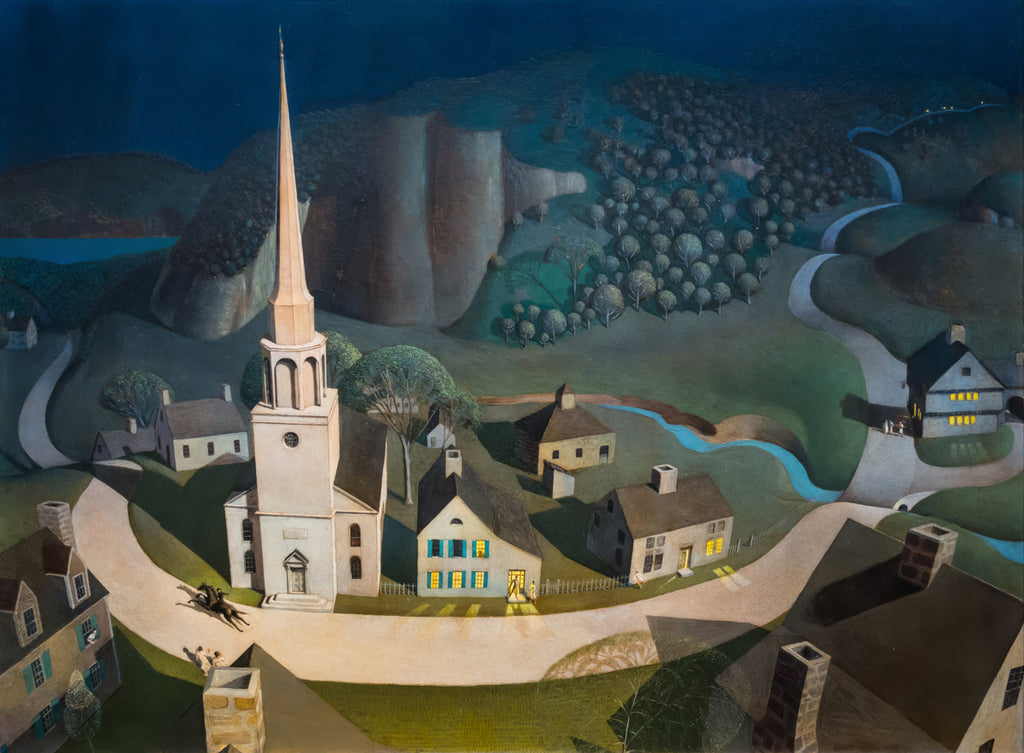On the 80th anniversary, a republish of a post from ten years ago.

On April 25, 1945 American and Soviet troops met near the town of Torgau
on the Elbe River, cutting the remaining and rapidly shrinking Nazi
held lands in half. Two weeks later the war in Europe would be over.

The path to that historic meeting began in an April twenty eight years
before. On April 6, 1917 the United States declared war on Germany and
entered World War One, while three days later Vladimir Ilyich Lenin
began his journey via a sealed railcar from exile in Switzerland across
Germany to Russia. Both events were massive
miscalculations by German military leadership. In the first instance it
was the unleashing of unrestricted submarine warfare against all
shipping to Great Britain, including that of the neutral United States,
the Germans understanding it would trigger American entry into the war
but gambling they could starve England out of the war before the United
States could bring its military to Europe in any meaningful numbers.
In the case of Lenin, the German strategy was to insert a virus into the
ongoing chaos of revolution in Russia following the abdication of the
Czar in March 1917 and thus knock Russia out of the war. In the
short-term the strategy worked; under Lenin's direction the Bolsheviks
outmaneuvered their fellow, more moderate revolutionaries, who were
reluctant to use force against the violent Bolsheviks. Lenin, perfectly
willing to use force against his enemies, organized a coup, and
took over the reigns of government, dismissing the Constituent Assembly (the first popularly elected legislative body in Russian history), establishing the Bolsheviks as the revolutionary vanguard of the communist dictatorship, and within
a year of taking power setting up the first prison camps for
political prisoners that later became known as the Gulag. By March
1918, the Bolsheviks had accepted a humiliating peace treaty with the
Germans. But it was too late for Germany. The submarines failed to
starve the British, the last German offensives in France ground to a
halt, the Allies (including the Americans) counterattacked, German army
morale collapsed and the German High Command panicked, beseeching the
Kaiser and politicians to seek a truce. And longer term, the new Soviet
Union was to arise as a much more formidable opponent than the old
Russian Empire.
In 1941, Germany's Fuhrer, Adolph Hitler, made his own
miscalculations about the same two countries. On June 22, 1941 he
launched a surprise attack on the Soviet Union, Germany's ally since
August 1939, confident that his armies could easily overwhelm the Soviet
military before the onset of winter but, along with his military
commanders, drastically underestimating the resiliency of the Red
military, the ruthlessness of Joseph Stalin and Soviet leadership
in their conduct of the war, and indifferent to how the atrocious Nazi occupation
policies would alienate many potential supporters in the recently
occupied borderlands and Ukraine. The result was the largest and
most murderous military campaign in human history leading to the deaths of up
to thirty million soldiers and civilians.(1)
Later that year, Hitler compounded his mistake when he declared war on
the United States only four days after the Japanese attack on Pearl
Harbor, an attack of which he had no prior knowledge, and an action he was not
required to take under his loose alliance with Japan. The reasons for
his decision remain unclear and controversial among historians but what
is true is that it rescued President Franklin Roosevelt and U.S.
military leaders from a dilemma. They viewed war with Germany and Japan
as inevitable but saw Germany as by far the bigger threat, and had
already agreed that in the event of war with both countries the United
States would direct 85% of its resources against Germany. During those
four days when Japan, but not Germany, was at war with the U.S.,
Roosevelt and his military commanders knew that public opinion would
require all efforts to be directed against the Japanese, taking away
from American military capabilities for what they believed was the
inevitable war against Germany. With Hitler's decision, the bulk of the
American war effort was directed against Germany and the opening of a
Second Front landing in Western Europe became a possibility, something
that Britain alone could never have done (it's also the most effective
practical rebuttal to continuing conspiracy theories that FDR knew in
advance of the Japanese attack and wanted the war; in reality it
complicated his foreign policy).
June of 1944 again saw critical miscalculations by Hitler regarding the
U.S. and the Soviet Union. In the West, he was convinced that the
long-anticipated Allied landing would take place at the Pas de Calais
region of France where he concentrated his best armored and infantry
units but the invasion instead took place in Normandy against weaker
German opposition and the Allies gained a foothold from which they could
not be dislodged.
That same month, the Germans were anticipating a large Soviet offensive
on the Eastern Front. They believed the attack would come either in the
Baltic region or in Ukraine and made their dispositions
accordingly. Instead the massive assault, begun on June 22 (the third
anniversary of Hitler's surprise attack), took place against the
undermanned Army Group Center, in what is now Belarus,
resulting in a catastrophic defeat for the Nazis with Soviet armies
advancing hundreds of miles into Poland and reaching the outskirts of
Warsaw, where Stalin cynically ordered a halt (for more as to why, read Warsaw Does Not Cry).
By late March 1945, American, British and Canadian armies were crossing
the Rhine and moving into the heart of Germany against crumbling, but
occasionally fanatical, resistance (particularly from SS units). To the
east, the Soviets began their final assault on Berlin on April 16, still
desperately defended by the German army. Though the war was clearly
lost Hitler felt that Germany was not worthy of him and, rather than
surrendering, deserved total destruction in a final orgy of
bloodletting. It took three days for Soviet armies to encircle the
German capital and launch their final assault to capture the city.
Hitler emerged from his bunker in Berlin on April 20 making his last appearance above-ground to award Iron Crosses to members of the Hitler Youth.

Two days later Hitler was advised by his military staff that his plan
to have Berlin relieved by an Army Group under General Steiner had
failed or, to be more accurate, his fantasy that there ever was a
Steiner Army Group capable of relieving the Nazi capital was finally
punctured.
The failure of the Steiner attack was the basis for one of the most memorable scenes in the 2004 German film Downfall, which recounts the final days in the bunker, much of it told from the perspective of Traudl Junge, a young secretary to the Fuhrer. The film is stunning in its grim account of the end of an evil era and Bruno Granz, in the role of Hitler, is astonishing. Ian Kershaw, the author of an excellent two-volume biography of Hitler (Hubris and Nemesis) wrote of the performance:
Of all the screen depictions of the Führer, even by famous actors, such as Alec Guinness or Anthony Hopkins, this is the only one which to me is compelling. Part of this is the voice. Ganz has Hitler's voice to near perfection. It is chillingly authentic.
You can watch the scene by clicking here; it's well worth your time. In the room with Hitler at one point we see two men standing, one thin and odd looking in a brown uniform. The figure in brown is Joseph Goebbels, the Minister of Propaganda. Next to him is Martin Bormann, the Fuhrer's Chief Secretary and nominal head of the Nazi Party - they are the primary political figures left in the bunker as both Heinrich Himmler and Hermann Goering had fled the city. Outside the room are two women standing next to each other. The taller one on the right is Traudl Junge. Towards the end of the scene another woman moves forward in the crowd; Eva Braun, Hitler's long-time mistress.
The fighting for the city ground on day after day with the Soviets inching forward towards the Reichstag and Chancellery, under which the Fuhrer's command bunker was located. This video contains footage of the street fighting as recorded by Soviet cameramen.
Hitler and Eva Braun were married on April 29 and killed themselves the
following day. Joseph Goebbels and his wife Magda arranged for their doctor to inject their six young children with morphine and then crush cyanide capsules between their teeth. Goebbels and his wife then
committed suicide.
The burned remains of Hitler, Braun, and the Goebbels were discovered and
identified by the Russians (though they did not inform the British or
Americans), reburied and
reexcavated several times, winding up at a Soviet security base in
Magdeburg, East Germany. In 1970 the KGB conducted a final excavation,
smashing and burning the remains and scattering them in a river (though
part of Hitler's skull may have been preserved in the Moscow archives of
the KGB).
Martin Bormann attempted to escape the bunker on the night of May 1-2
but committed suicide or was killed by Russian patrols. His fate
remained uncertain for many years until remains were found at a West
Berlin site in 1972 and identified as his (later confirmed by genetic
testing in 1998). Himmler committed suicide on May 23 after being
captured by the British, and Goering killed himself the following year at
Nuremburg, just hours before his scheduled hanging.
The formal German surrender of the city took place on May 2, 1945 while
the overall capitulation of Germany took place on May 7 (US and British
front) and May 8 (Russian front) though severe fighting continued in the
area around Prague, Czechoslovakia until May 11.
Stalin ordered the Soviet military commanders to take Berlin as quickly
as possible and not be concerned about casualties (not that the
Soviet leaders ever appeared to be concerned about casualties). The
cost was about 350,000 Soviet soldiers killed or wounded in the Battle
of
Berlin (for comparison, American losses for the entire war were about
one million) along with an indeterminable but probably similar number of
German soldiers and civilians. The city, already heavily damaged by
British and American bombing raids, was reduced to rubble and
significant reconstruction did not begin until after the Soviet
blockade of West Berlin in 1948-9 and the founding of the North Atlantic
Treaty Organization (NATO) in 1949. For more on the Blockade read Berlin Divides.
Traudl Junge was among those that left the bunker on the night of May 1-2, one of the few who escaped death or Russian captivity. Just before her death in 2002 she gave an interview, parts of which are included at the beginning and end of Downfall. This excerpt from the close of the movie shows her speaking about her actions and responsibility.
For the returning Russian soldiers, of whom 8 to 9 million had died in
the war, the hopes of many for a better life and less arbitrary cruelty
by their rulers were destroyed by Stalin's suspicion as told in the
greatest and most factually accurate of rock/pop history songs, Roads To Moscow by Al Stewart, of which THC has written before, with its haunting closing verse.
--------------------------------------------
(1) Strangely, both Napoleon's invasion of Russia in 1812 and Hitler's in 1941 were prompted by the same analysis - Russia needed to be defeated in order for Britain to be defeated. For more read Bonapartaroo Barbarossa.
 (Lou Brissie)
(Lou Brissie) (Phil Marchildon)
(Phil Marchildon) 
